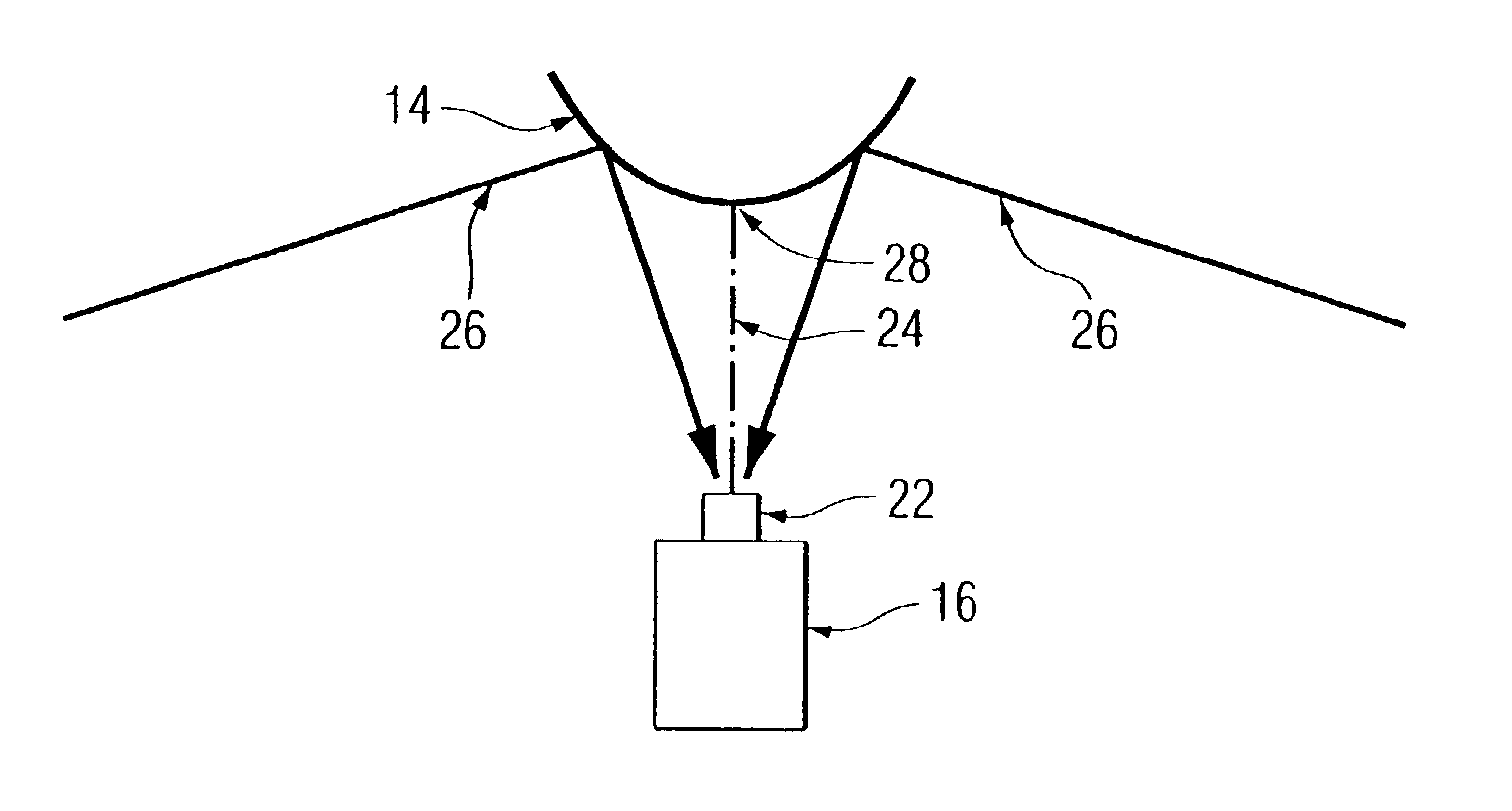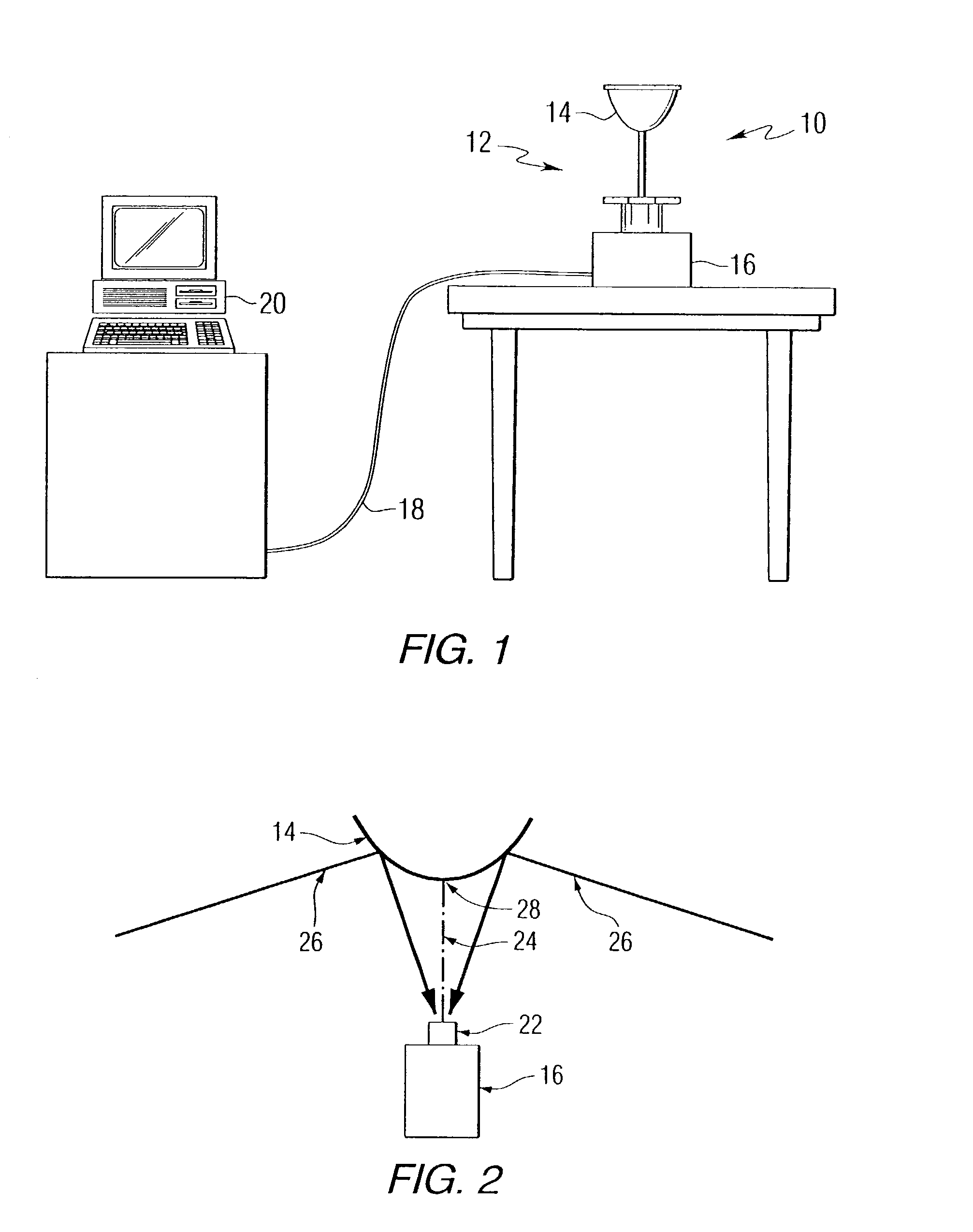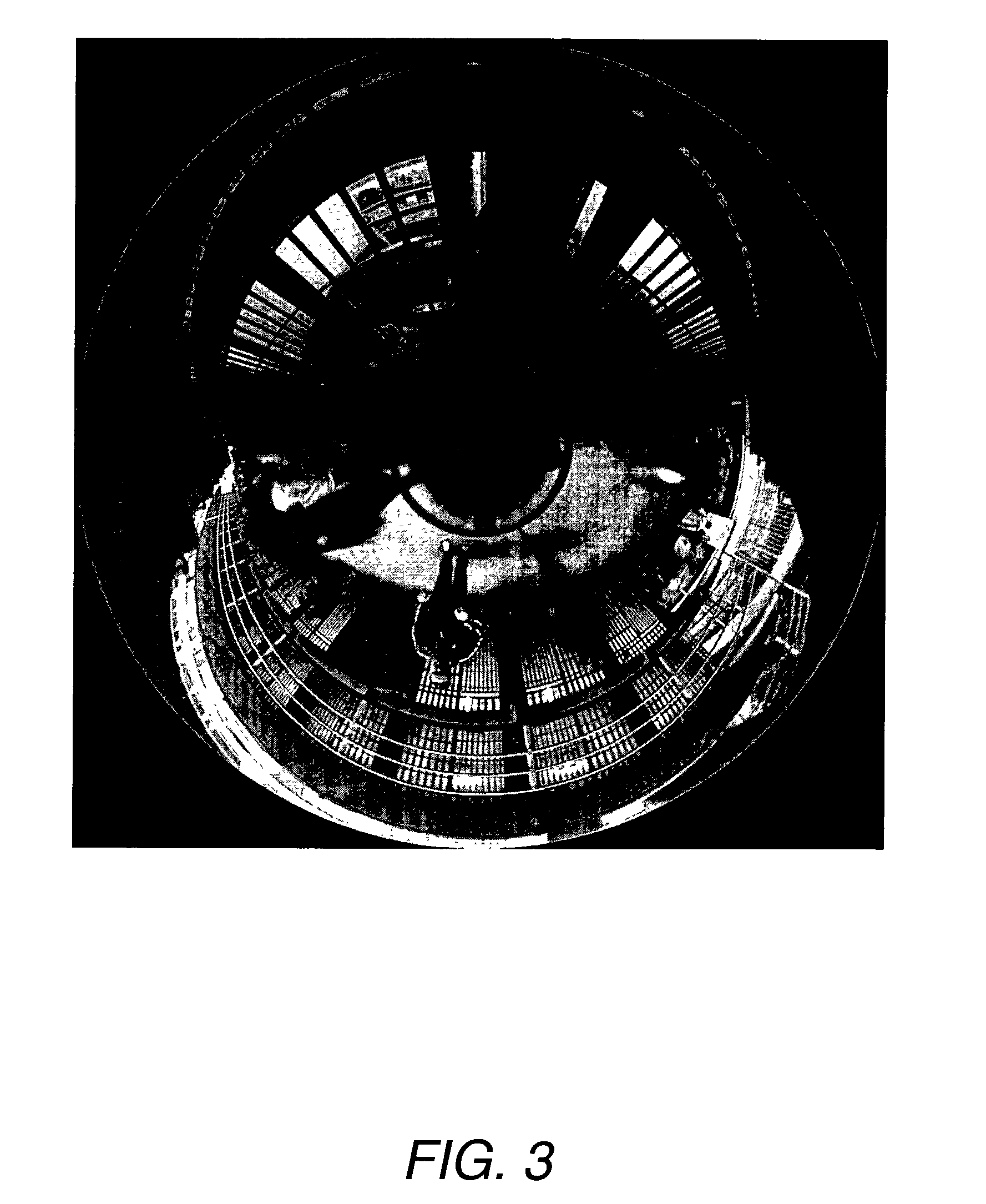System and method for panoramic imaging
a panoramic and image processing technology, applied in the field of panoramic imaging, can solve the problems of convergent rays of light that make up the reflected image, insufficient imaging or resolution, and large optical distortion in the resulting image, and achieve the effect of quick presentation to the user
- Summary
- Abstract
- Description
- Claims
- Application Information
AI Technical Summary
Benefits of technology
Problems solved by technology
Method used
Image
Examples
Embodiment Construction
[0050]The present invention provides a system for processing photographic images. Referring to the drawings, FIG. 1 is a schematic representation of a system 10 for producing panoramic images. The system includes a panoramic imaging device 12, which can include a mirror 14 and a camera 16 that cooperate to capture and produce an image of a surrounding scene in the form of a two-dimensional array of pixels. In one embodiment, a digital converter device, such as a DV or IIDC digital camera connected through an IEEE-1394 bus, may be used to convert the captured image into pixel data. In another embodiment, the camera may be analog, and a digital converter device such as an analog to digital converter may be used to convert the captured image into pixel data. For the purposes of this invention, the pixels are considered to be an abstract data type to allow for the large variety of color models, encodings and bit depths. Each pixel can be represented as a data word, for example a pixel c...
PUM
 Login to View More
Login to View More Abstract
Description
Claims
Application Information
 Login to View More
Login to View More - R&D
- Intellectual Property
- Life Sciences
- Materials
- Tech Scout
- Unparalleled Data Quality
- Higher Quality Content
- 60% Fewer Hallucinations
Browse by: Latest US Patents, China's latest patents, Technical Efficacy Thesaurus, Application Domain, Technology Topic, Popular Technical Reports.
© 2025 PatSnap. All rights reserved.Legal|Privacy policy|Modern Slavery Act Transparency Statement|Sitemap|About US| Contact US: help@patsnap.com



